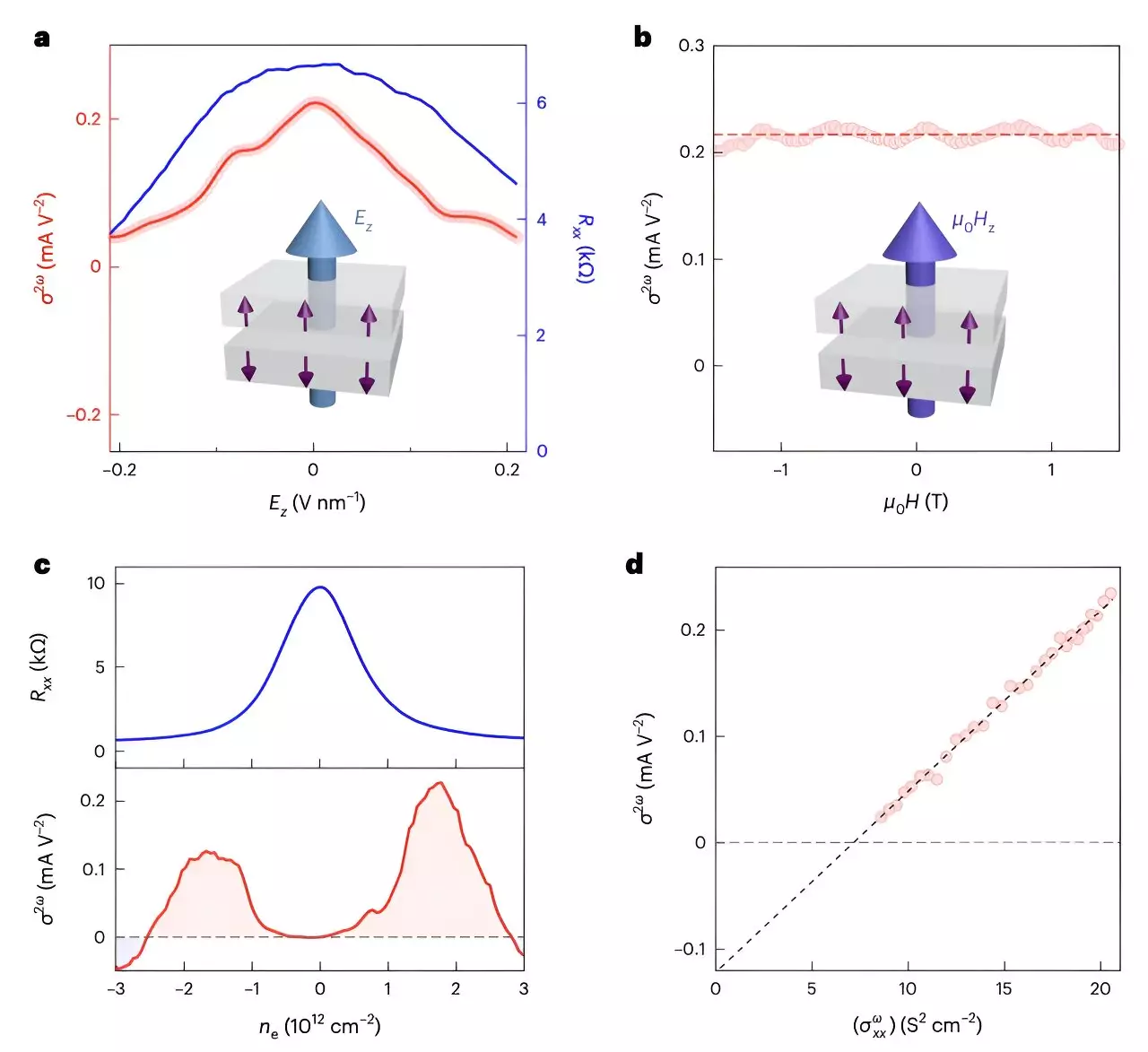Antiferromagnets are intriguing materials characterized by a unique arrangement of magnetic moments. Unlike ferromagnets that have aligned magnetic moments, in antiferromagnets, the neighboring atoms exhibit alternating magnetic orientations, resulting in a cancellation of their magnetic effects. This means that, on a macroscopic scale, antiferromagnets do not show a net magnetism. Nonetheless, they possess remarkable properties beneficial for spintronic applications and electronic devices. In recent research led by a team at Harvard University, a novel antiferromagnetic diode effect has been identified in the layered compound MnBi2Te4, marking a significant advance in the field.
Researchers at Harvard University made headlines with their discovery of an antiferromagnetic diode effect in MnBi2Te4, an even-layered antiferromagnet defined by its centrosymmetric crystal structure. Unlike many materials that exhibit directional charge separation, MnBi2Te4 stands out due to its essential symmetry. The implications of this discovery are vast—they suggest the possibility of constructing devices that can leverage this unique diode effect. Published in the prestigious journal Nature Electronics, this research explores how the antiferromagnetic diode can potentially transform the landscape of electronics and spintronics.
The diode effect, known for enabling the unidirectional flow of electrical current, is foundational in the design of various electronic components such as radio receivers and temperature sensors. By tapping into the antiferromagnetic diode effect observed in MnBi2Te4, researchers envision the development of advanced devices including in-plane field-effect transistors and microwave energy harvesting systems. The research team, consisting of Anyuan Gao, Shao-Wen Chen, and their colleagues, posits that by architecting electronic components around this newly identified effect, more efficient and innovative technologies can be realized.
The team fabricated multiple devices to investigate the characteristics of even-layered MnBi2Te4. Two distinct electrode configurations were employed: Hall bar electrodes, which are crucial for longitudinal current application and measurement of the Hall effect, and radially distributed electrodes structured in a circular format. These configurations allowed the researchers to systematically explore the nonlinear transport behavior that defines the observed antiferromagnetic diode effect.
To substantiate their findings, the researchers employed a suite of advanced techniques, including spatially resolved optical methods and electrical sum frequency generation (SFG) measurements. This thorough approach facilitated the observation of pronounced second-harmonic transport, which is essential for determining device functionality in nonlinear electronic contexts.
The findings from this study not only highlight the practicality of the antiferromagnetic diode effect but also set the stage for further exploration in quantum materials. The authors of the research emphasize the promising applications of their findings, which could lead to the development of antiferromagnetic logic circuits and efficient microwave harvesting devices. The potential to utilize electrical sum-frequency generation as a tool for detecting nonlinear responses in quantum materials opens new avenues for researchers seeking to innovate in the field.
As the quest for better and more efficient electronic devices continues, the insights gleaned from this research could contribute significantly to advancements in technology. The interplay between antiferromagnetic materials and quantum mechanics holds the key to creating systems that are not only more efficient but also capable of performing complex functions that were previously unimaginable. Whether in telecommunications, computing or energy harvesting, the impact of this groundbreaking study is poised to resonate across various sectors, marking a critical juncture in electronic and spintronic device development.
The recent observation of the antiferromagnetic diode effect in MnBi2Te4 underscores the depth of innovation occurring at the intersection of materials science and quantum electronics. As researchers dig deeper into this field, further exploration may unravel the myriad possibilities that lie in the realm of antiferromagnetic technologies, thereby reshaping the future of electronic devices.

